Featured image credit: SpaceX
Lift Off Time | April 29, 2021 – 03:44 UTC April 28, 2021 – 23:44 EDT |
|---|---|
Mission Name | Starlink V1.0 L24 (Starlink RF Mission 1-2): the 25th Starlink mission |
Launch Provider | SpaceX |
Customer | SpaceX |
Rocket | Falcon 9 Block 5 B1060-7; 36 day turn around |
Launch Location | Space Launch Complex 40 (SLC-40), Cape Canaveral Space Force Station, Florida, USA |
Payload mass | 15,600 kg (~34,000 lbs) (60 x 260 kg, plus dispenser) |
Where did the satellites go? | Starlink Shell 1; 550 km circular low-Earth Orbit (LEO), initial orbit: 53.06° 287 x 255 km |
Did they attempt to recover the first stage? | Yes |
Where did the first stage land? | B1060-7 successfully landed 633 km downrange on Just Read the Instructions Tug: Finn Falgout; Support: GO Quest |
Did they attempt to recover the fairings? | Yes, Shelia Bordelon successfully recovered both fairing halves from the water |
Were the fairings new? | Yes |
This will be the: | – 3rd fastest turnaround time at 36 days (record: 27 days, 4 hours, and 4 minutes) – 115th Falcon 9 launch – 57th Falcon 9 flight with a flight proven booster – 61st re-flight of a booster – 12th re-flight of a booster in 2021 – 81st booster landing – 12th launch for SpaceX in 2021 – 4th 7th flight of a booster – 69th SpaceX launch from SLC-40 – 37th orbital launch attempt of 2021 (36th successful launch) Stats powered by boostertracker.com |
Where to watch | Official replay |
How did it go?
SpaceX’s Starlink V1.0 L24 (Starlink 24) mission successfully launched 60 Starlink satellites atop its Falcon 9 rocket. The Falcon 9 lifted off from Space Launch Complex 40 (SLC-40), at Cape Canaveral Space Force Station, in Florida, United States. Starlink 24 marked the 24th operational Starlink mission, boosting the total number of Starlink satellites launched to 1,505, of which 1,435 are still in orbit around the Earth as of launch.
In filings with the FCC, Starlink 24 is also known as Starlink RF Mission 1-2. The RF stands for “radio frequency,” and suggests that the satellites are not equipped with inter-satellite laser communication links. It is not known what the “1-2” signifies.
What is Starlink?
Starlink is SpaceX’s internet communication satellite constellation. The Low-Earth orbit constellation will deliver fast, low-latency internet service to locations where ground-based internet is unreliable, unavailable, or expensive. The first phase of the constellation consists of 5 orbital shells.
Starlink is currently in the “Better Than Nothing Beta,” allowing anyone in approved regions to order or preorder. However, for now, only higher latitudes are fully covered, so people of lower latitudes are currently only able to pre-order Starlink. After 28 launches SpaceX will achieve global coverage, but the constellation will not be complete until ~42,000 satellites are in orbit. Given SpaceX’s current Starlink production and launch rate, Starlink will have global coverage, excluding the poles, by the middle of 2021.
Once Starlink is complete, the venture is expected to profit $30-50 billion annually. This profit will largely finance SpaceX’s ambitious Starship program, as well as Mars Base Alpha.

What is the Starlink Satellite?
Each Starlink V1.0 satellite has a compact design and a mass of 260 kg. SpaceX developed a flat-panel design, allowing them to fit as many satellites as possible into the Falcon 9’s 5.2 meter wide payload fairing. Due to this flat design, SpaceX is able to fit up to 60 Starlink satellites and the payload dispenser into the second stage, while still being able to recover the first stage. This is near the recoverable Falcon 9’s payload capacity to LEO, at around 17 tonnes.
For how small each Starlink satellite is, each one is packed with high-tech communication and cost-saving technology. Each Starlink satellite is equipped with 4 phased array antennas, for high bandwidth and low-latency communication, and two parabolic antennas. The satellites also include a star tracker, which provides the satellite with attitude data, ensuring precision in broadband communication.
The Starlink satellites are also equipped with an autonomous collision avoidance system, which utilizes the DOD’s debris tracking database to autonomously avoid collisions with other spacecraft and space junk.
Currently, the Starlink satellites being launched into polar orbit have a laser communication system on board. This system is currently in version 0.9, however SpaceX is expecting all new Starlink satellites to be equipped with it by next year.
To decrease costs, each satellite only has a single solar panel, which simplifies the manufacturing process. To further cut costs, Starlink’s propulsion system, an ion thruster, uses krypton as fuel, instead of xenon. While the specific impulse (ISP) of krypton is significantly lower than xenon’s, it is far cheaper, which further decreases the satellite’s manufacturing cost.
Ion Power
Each Starlink satellite is equipped with the first Hall-effect krypton powered ion thruster. This thruster is used both for ensuring the correct orbital position, but is also used for orbit raising and orbit lowering. At the end of the satellite’s life, this thruster is used to deorbit the satellite.
What is the Starlink Satellite Constellation?
A satellite constellation is a group of satellites that work in conjunction for a common purpose. Currently, SpaceX plans to form a network of 11,716 satellites; however, in 2019 SpaceX filed an application with the Federal Communication Commission (FCC) for permission to launch and operate an additional 30,000 satellites as part of phase 2 of Starlink. To put this number of satellites into perspective, this is roughly 20 times more satellites than were launched before 2019.
Of the initial ~12,000 satellites, ~4,400 would operate on the Ku and Ka bands, with the other ~7,600 operating on the V-Band.
Due to the vast number of Starlink satellites, many astronomers are concerned about their effect on the night sky. However, SpaceX is working with the astronomy community and implementing changes to the satellites to make them harder to see from the ground and less obtrusive to the night sky. SpaceX has changed how the satellites raise their orbits and, starting on Starlink V1.0 L9, added a sunshade to reduce light reflectivity. These changes have already significantly decreased the effect of Starlink on the night sky.
Phase 1 Orbital Shells:
| Inclination (°) | Orbital Altitude (km) | Number of Satellites | |
| Shell 1 | 53.0 | 550 | 1,584 |
| Shell 2 | 53.2 | 540 | 1,584 |
| Shell 3 | 70.0 | 570 | 720 |
| Shell 4 | 97.6 | 560 | 348 |
| Shell 5 | 97.6 | 560 | 172 |
Shell 1
The first orbital shell of Starlink satellites will consist of 1,584 satellites in a 53° 550 km low-Earth orbit. This is the shell that SpaceX is currently filling, and it is expected that this shell will be complete by June 2021. Once complete, the first shell will provide coverage between roughly 52° and -52° latitude (~80% of the Earth’s surface), and will not feature laser links until replacement satellites will launch after 2021.
Shell 2
The second shell will consist of 1,584 satellites in a 540 km 53.2° LEO. This updated orbital configuration will slightly increase coverage area and will drastically increase the bandwidth of the constellation. After the first shell’s completion it is expected that SpaceX will fill this shell alongside with the 4th shell next.
Shell 3
Starlink’s third shell will host 720 satellites in a 70° 570 km orbit. These satellites will significantly increase the coverage area, which will make the Starlink constellation cover around 94% of the globe.
Shell 4
Shell 4 will consist of 348 satellites in a 97.6° 560 km orbit. SpaceX deployed 10 laser link test satellites into this orbit on their Transporter-1 mission to test satellites in a polar orbit. On April 6, 2021 Gwynne Shotwell said that SpaceX will conduct regular polar Starlink launches in the summer. All satellites that will be deployed into this orbit will have intersatellite laser link communication.
Shell 5
The final shell of phase 1 of Starlink will host 172 satellites in another 97.6° 560 km low-Earth polar orbit. It is unclear why this shell covers the same orbital plane as shell 4, but this shell will also consist purely of satellites with laser communication links.
Phase 2 Orbital Shells:
Shell 6
The sixth orbital shell of Starlink satellites is permitted to consist of 2,493 satellites in a 42° 335.9 km LEO. This large number of satellites will decrease latency and increase bandwidth for lower latitudes.
Shell 7
The seventh Starlink shell permits SpaceX to deploy 2,478 satellites into a 48° 340.8 km low-Earth orbit. These satellites will further decrease latency and increase bandwidth for lower latitudes.
Shell 8
The final shell of Starlink phase 2 allows SpaceX to deploy 2,547 satellites in a 53° 345.6 km orbit.
SpaceX has until March of 2024 to be half complete with phase 1, and phase 1 must be complete by March of 2027. Phase 2 must be half complete by November of 2024, and be finished by November of 2027. Failure to do so could result in SpaceX losing their dedicated frequency band.
What is Falcon 9 Block 5?
The Falcon 9 Block 5 is SpaceX’s partially reusable two-stage medium-lift launch vehicle. The vehicle consists of a reusable first stage, an expendable second stage, and, when in payload configuration, a pair of reusable fairing halves.
First Stage
The Falcon 9 first stage contains 9 Merlin 1D+ sea level engines. Each engine uses an open gas generator cycle and runs on RP-1 and liquid oxygen (LOx). Each engine produces 845 kN of thrust at sea level, with a specific impulse (ISP) of 285 seconds, and 934 kN in a vacuum with an ISP of 313 seconds. Due to the powerful nature of the engine, and the large amount of them, the Falcon 9 first stage is able to lose an engine right off the pad, or up to two later in flight, and be able to successfully place the payload into orbit.
The Merlin engines are ignited by TEA-TEB. During static fire and launch the TEA-TEB is provided by the ground service equipment. However, as the Falcon 9 first stage is able to propulsively land three of the Merlin engines (E1, E5, and E9) contain TEA-TEB canisters to relight for the boost back, reentry, and landing burns.
Second Stage
The Falcon 9 second stage is the only expendable part of the Falcon 9. It contains a singular MVacD engine that produces 992 kN of thrust and an ISP of 348 seconds. The second stage is capable of doing several burns, allowing the Falcon 9 to put payloads in several different orbits.
For missions with many burns and/or long coasts between burns, the second stage is able to be equipped with a mission extension package. When the second stage has this package it has a grey strip, which helps keep the RP-1 warm, an increased number of COPVs for pressurization control, and additional TEA-TEB.
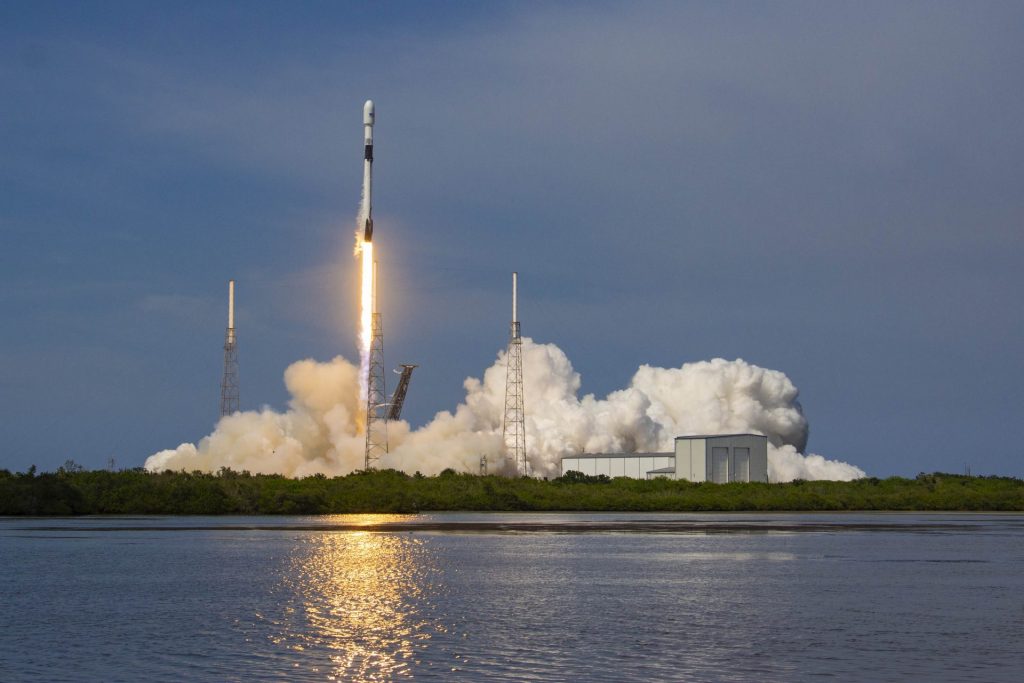
Falcon 9 Booster B1060
The booster that supported Starlink 24 is B1060, which had flown six previous times. As Starlink 24 marks the booster’s 7th flight, it changed its designation to B1060-7.
| B1060’s missions | Launch Date (UTC) | Turn Around Time (Days) |
| GPS III SV03 | June 30, 2020 | N/A |
| Starlink V1.0 L11 | September 3, 2020 | 65 |
| Starlink V1.0 L14 | October 24, 2020 | 51 |
| Türksat-5A | January 8, 2021 | 76 |
| Starlink V1.0 L18 | February 4, 2021 | 27 |
| Starlink V1.0 L22 | March 24, 2021 | 48 |
| Starlink V1.0 L24 | April 29, 2021 | 36 |
Following stage separation, the Falcon 9 conducted 2 burns. These burns softly touched down the booster SpaceX’s autonomous spaceport drone ship Just Read the Instructions.
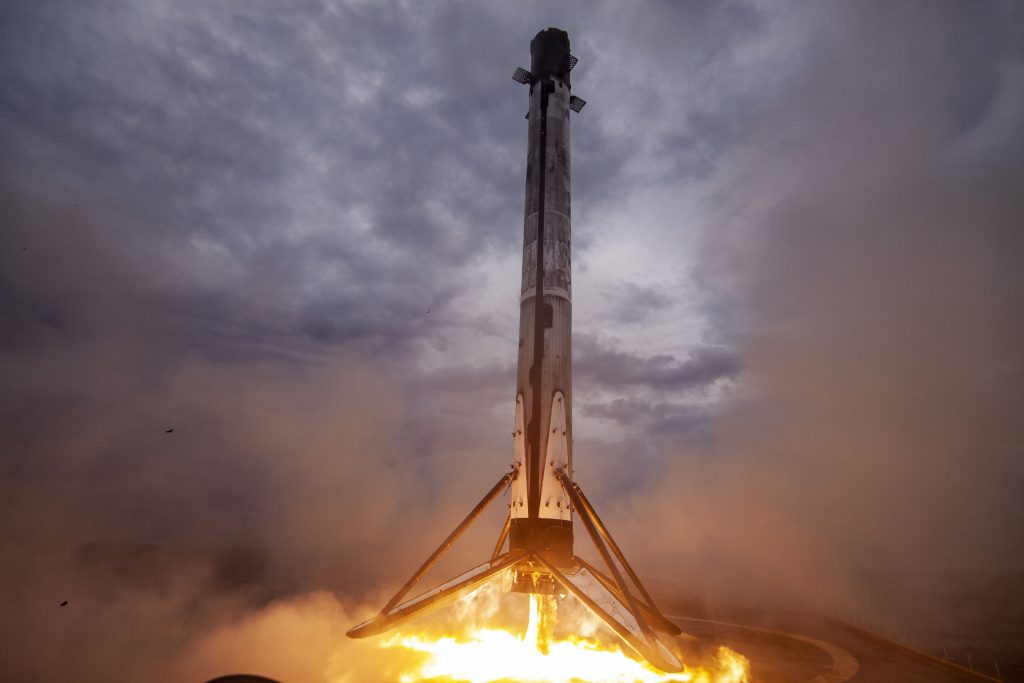
Falcon 9 Fairings
The Falcon 9’s fairing consists of two dissimilar reusable halves. The first half (the half that faces away from the transport erector) is called the active half, and houses the pneumatics for the separation system. The other fairing half is called the passive half. As the name implies, this half plays a purely passive role in the fairing separation process, as it relies on the pneumatics from the active half.
Both fairing halves are equipped with cold gas thrusters and a parafoil which are used to softly touch down the fairing half in the ocean. SpaceX used to attempt to catch the fairing halves in nets on GO Ms. Tree and GO Ms. Chief. However, at the end of 2020 this program was cancelled due to safety risks and a low success rate. On Starlink 24, SpaceX successfully recovered both the active and passive half from the water with their recovery vessel Shelia Bordelon.
SpaceX is currently flying two slightly different versions of the Falcon 9 fairing. The new “upgraded” version has vents only at the top of each fairing half, by the gap between the halves, whereas the old version had vents placed spread equidistantly around the base of the fairing. Moving the vents decreases the chance of water getting into the fairing, making the chance of a successful scoop significantly higher.
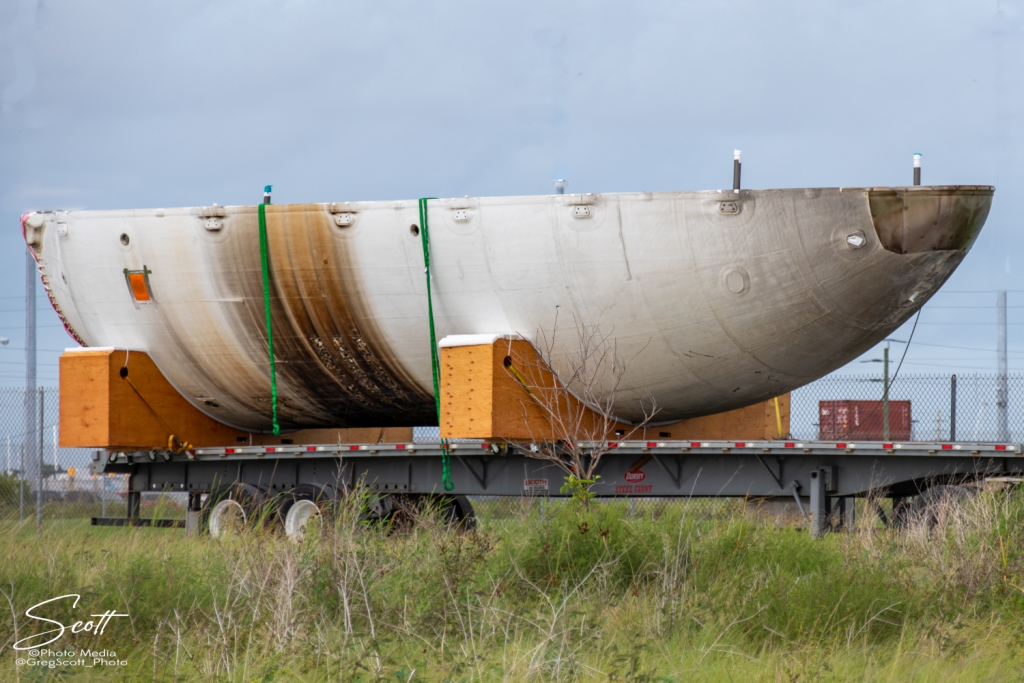
An active Falcon 9 fairing half (Credit: Greg Scott) 
Falcon 9 Passive fairing half (Credit: Greg Scott) 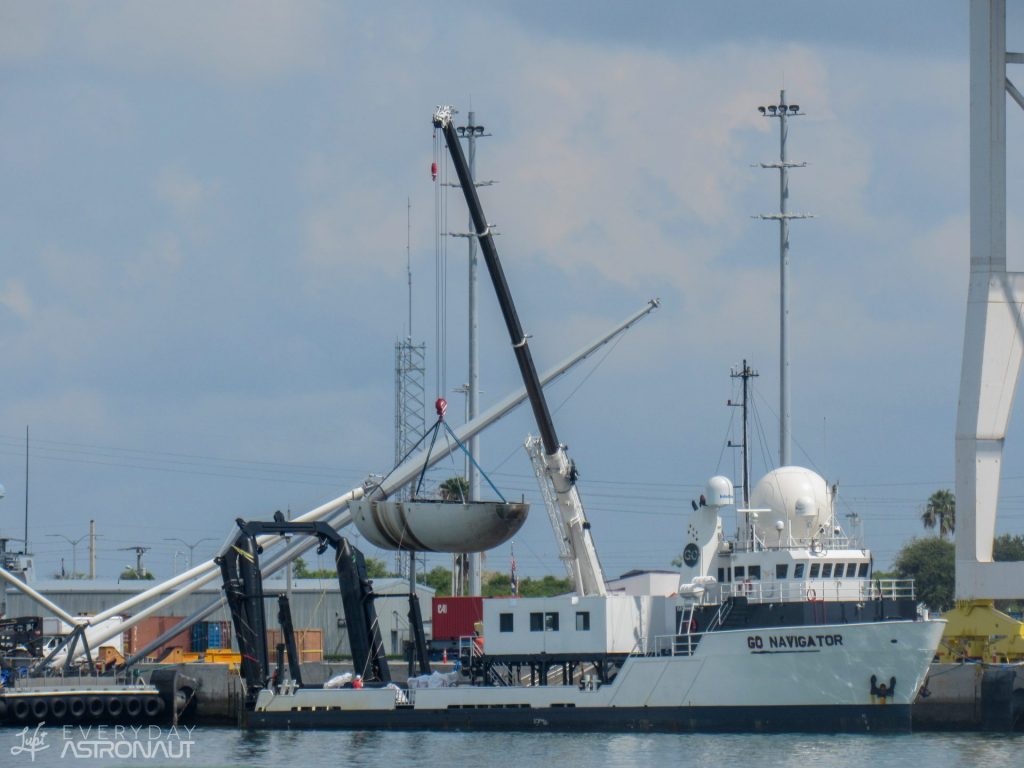
Half of the fairing being taken off Go. Navigator. (Credit: Lupi) 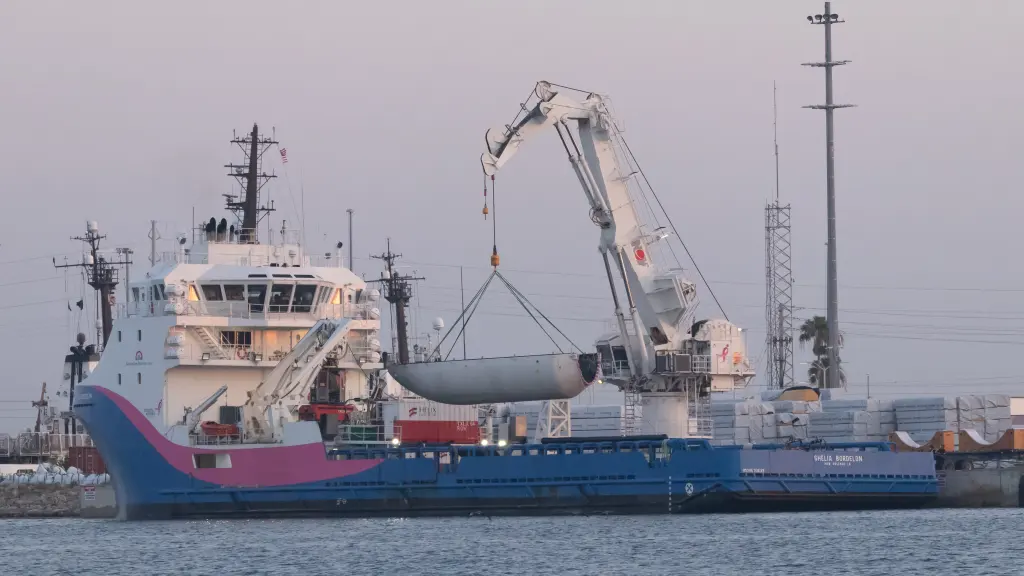
A passive fairing half being unloaded from Shelia Bordelon after the Starlink V1.0 L22 mission (Credit: Kile M)
Starlink 24 Full Mission Profile
Hr/Min/Sec Event
– 00:38:00 SpaceX Launch Director verifies go for propellant load.
– 00:35:00 RP-1 (rocket grade kerosene) loading underway.
– 00:35:00 1st stage LOx (liquid oxygen) loading underway
– 00:16:00 2nd stage LOx loading underway
– 00:07:00 Falcon 9 begins engine chill prior to launch
– 00:01:00 Command flight computer to begin final prelaunch checks
– 00:01:00 Propellant tank pressurization to flight pressure begins
– 00:00:45 SpaceX Launch Director verifies go for launch
– 00:00:03 Engine controller commands engine ignition sequence to start
– 00:00:00 Falcon 9 Liftoff
Starlink 24 Launch, Landing, and Satellite Deployment*
Hr/Min/Sec Event
00:01:12 Max Q (moment of peak mechanical stress on the rocket)
00:02:32 1st stage main engine cutoff (MECO)
00:02:36 1st and 2nd stages separate
00:02:44 2nd stage engine starts (SES-1)
00:03:03 Fairing deployment
00:06:58 1st stage entry burn complete
00:08:37 1st stage landing
00:08:47 2nd stage engine cutoff (SECO-1)
00:45:45 2nd stage engine starts (SES-2)
00:45:45 2nd stage engine cutoff (SECO-2)
01:04:42 Starlink 24 payload deploy
* All times are approximate





